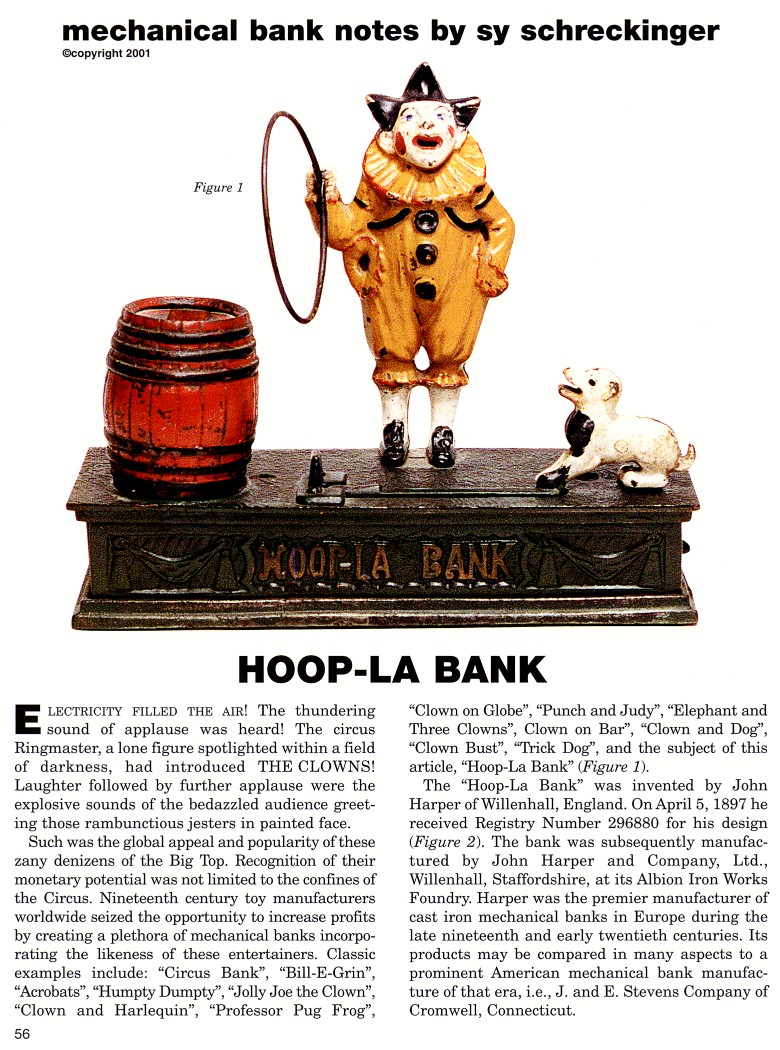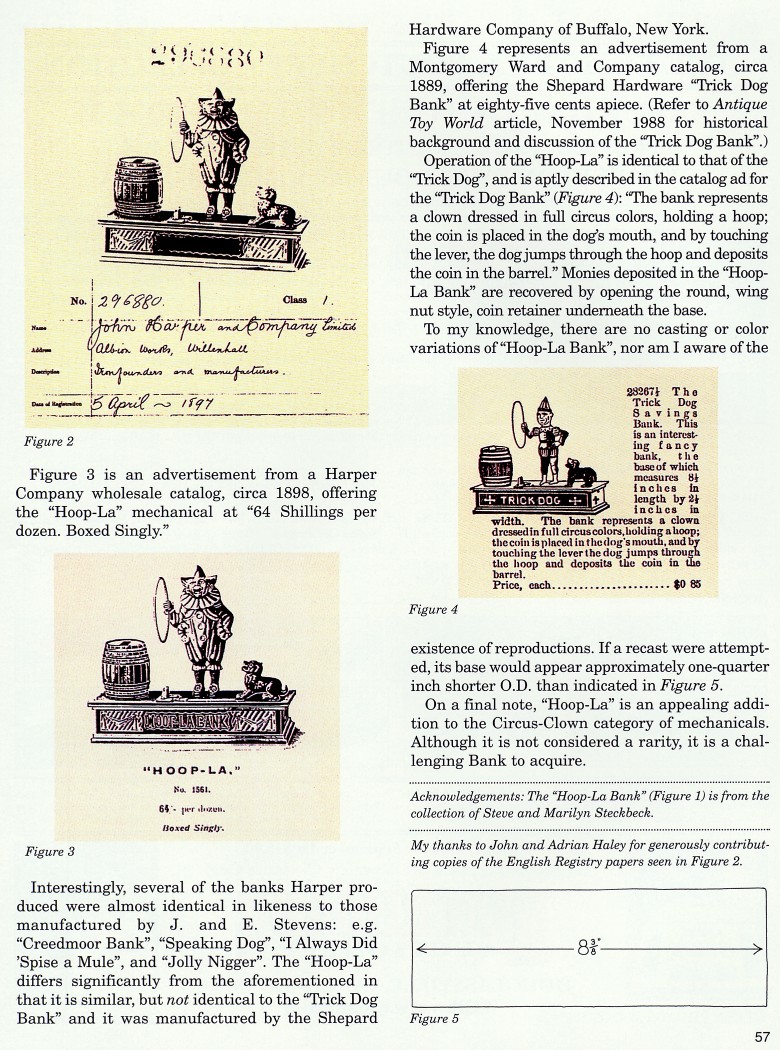|
Hoop-La Bank
by Sy Schreckinger – ANTIQUE TOY WORLD Magazine – October, 2001
Electricity filled the air! The thundering sound
of applause was heard! The circus Ringmaster, a lone figure spotlighted
within a field of darkness, had introduced THE CLOWNS! Laughter followed
by further applause were the explosive sounds of the bedazzled audience
greeting those rambunctious jesters in painted face.
Such was the global appeal and popularity of these zany denizens of
the Big Top. Recognition of their monetary potential was not limited to
the confines of the Circus. Nineteenth century toy manufacturers worldwide
seized the opportunity to increase profits by creating a plethora of
mechanical banks incorporating the likeness of these entertainers. Classic
examples include: "Circus Bank", "Bill-E-Grin", "Acrobats", "Humpty Dumpty",
"Jolly Joe the Clown", "Clown and Harlequin", "Professor Pug Frog", "Clown
on Globe", "Punch and Judy", "Elephant and Three Clowns", Clown on Bar",
"Clown and Dog", "Clown Bust", "Trick Dog", and the subject of this
article, "Hoop-La Bank" (Figure 1).
The "Hoop-La Bank" was invented by John Harper of Willenhall,
England. On April 5, 1897 he received Registry Number 296,880 for his
design (Figure 2). The bank was subsequently manufactured by John Harper
and Company, Ltd., Willenhall, Staffordshire, at its Albion Iron Works
Foundry. Harper was the premier manufacturer of cast iron mechanical banks
in Europe during the late nineteenth and early twentieth centuries. Its
products may be compared in many aspects to a prominent American
mechanical bank manufacture of that era, i.e., J. and E. Stevens Company
of Cromwell, Connecticut.
Figure 3 is an advertisement from a Harper Company wholesale catalog,
circa 1898, offering the "Hoop-La" mechanical at "64 Shillings per dozen.
Boxed Singly."
Interestingly, several of the banks Harper produced were almost
identical in likeness to those manufactured by J. and E. Stevens: e.g.
"Creedmoor Bank", "Speaking Dog", "I Always Did 'Spise a Mule", and "Jolly
Nigger". The "Hoop-La" differs significantly from the aforementioned in
that it is similar, but not identical to the "Trick Dog Bank" and it was
manufactured by the Shepard Hardware Company of Buffalo, New York.
Figure 4 represents an advertisement from a Montgomery Ward and
Company catalog, circa 1889, offering the Shepard Hardware "Trick Dog
Bank" at eighty-five cents apiece. (Refer to Antique Toy World article,
November 1988 for historical background and discussion of the "Trick Dog
Bank".)
Operation of the "Hoop-La" is identical to that of the "Trick Dog",
and is aptly described in the catalog ad for the "Trick Dog Bank" (Figure
4): "The bank represents a clown dressed in full circus colors, holding a
hoop; the coin is placed in the dog's mouth, and by touching the lever,
the dog jumps through the hoop and deposits the coin in the barrel."
Monies deposited in the "Hoop-La Bank" are recovered by opening the round,
wing nut style, coin retainer underneath the base.
To my knowledge, there are no casting or color variations of "Hoop-La
Bank", nor am I aware of the existence of reproductions. If a recast were
attempted, its base would appear approximately one-quarter inch shorter
O.D. than indicated in Figure 5.
On a final note, "Hoop-La" is an appealing addition to the
Circus-Clown category of mechanicals. Although it is not considered a
rarity, it is a challenging Bank to acquire.
Acknowledgements: The "Hoop-La Bank" (Figure 1) is from the
collection of Steve and Marilyn Steckbeck.
My thanks to John and Adrian Haley for generously contributing copies
of the English Registry papers seen in Figure 2.
|


